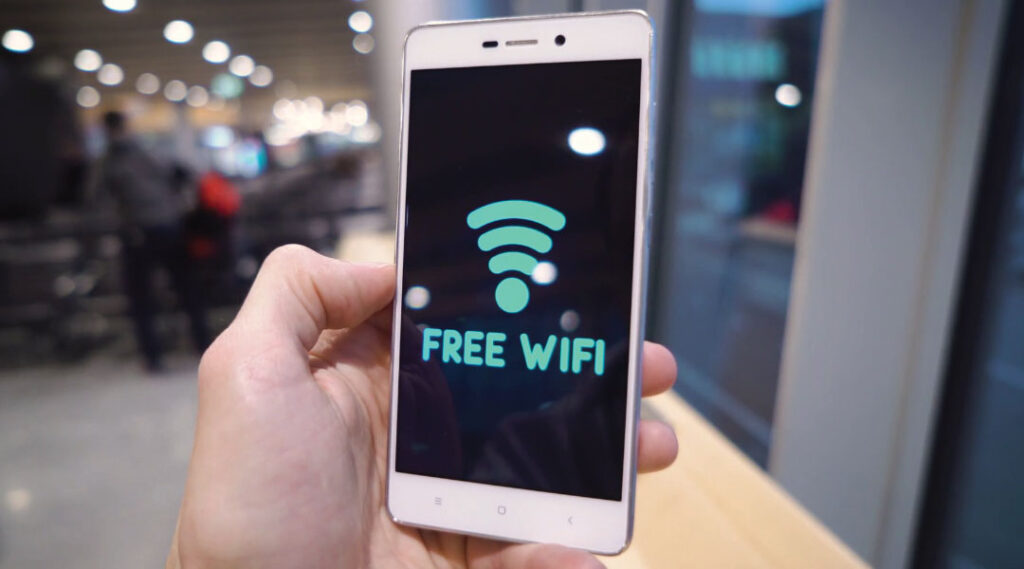Different Types of Cyber Attack

It is one such pleasant Sunday morning. You’re in a coffee shop. You want to make an urgent phone call but you realize you are running out of balance. You find strong Wi-Fi network at coffee shop. You connect to the network and recharge your phone. For you it’s just a matter of few minutes, but within those ‘few minutes’ your whole online activity was secretly monitored by someone, including your net banking details and passwords! Horrified?
Well, today we are in a world, where ‘No Internet Connection’ scares us more than anything. The very first thing what most of us do, when we wake up in the morning is, switch on internet and check notifications. May it be our home or shopping mall or railway station or an airport, we constantly search for an internet. This persistent need of an internet makes us connect to free public Wi-Fi which is least secured!
According to ‘Norton Wi-Fi Risk Report 2017’, around 96% of Indians put personal data and financial information at risk by using public Wi-Fi for checking banking updates or for sharing photos and videos. No wonder, the rate of online banking fraud is rapidly increasing day by day.
Many times, public Wi-Fi connection is not encrypted which makes it vulnerable. Also connecting to a public Wi-Fi is not that difficult. In majority cases, to connect to a public Wi-Fi, you just have to enter your mobile number and you’re ready to go! This least security is what makes easy for hacker to make a move.
How do they compromise identity through public Wi-Fi?
There are several types of cyber attacks through which financial identity theft is done by hackers.
Man in the middle (MITM) attack
A Man-in-the-Middle attack requires the hacker to place himself between user and an application and relaying messages for them, while both the parties believe that, they are communicating with each other directly and securely. The goal of MITM attack is to steal sensitive information such as net banking details or other credentials. Usually users making financial activity are soft targets for MITM attackers.
Sniffer attack
A sniffer can be a hardware, or a software used by hackers to monitor and capture data passing through a network. Through sniffing attack, an attacker can capture sensitive data like passwords, email ids and other details. Sniffers can be installed in the system or a packet sniffer can be placed on the network, through which the trespasser captures data or monitors your online account’s activity.
Spoofing attack
In a spoofing attack, hacker introduces network traffic, pretending to be someone else. An intruder generates a malicious network, pretending it to be generated from original system. These networks are similar as the genuine one. When user connects to it unknowingly, an attacker hacks all the sensitive information.
How to protect your identity from growing cyber-attacks?
Avoid using public Wi-Fi. Do not connect to public Wi-Fi if not necessary. If connected, do not make any sensitive activity such as net banking transactions.
Check authenticity. Always check authenticity of public Wi-Fi before connecting. Ask owner for the correct network name and password to avoid connecting to fake network. Also remember, Wi-Fi with strong network is not always authentic.
Use a VPN. Consider using Virtual Private Network (VPN) as it provides data security and encryption to your browsing across public networks. VPN masks your IP address in order to reduce cyber-attacks.
Turn off Wi-Fi when not in use. Turn off your Wi-Fi if not actively using, so that you can avoid getting connected to any random or malicious network automatically. The longer you stay connected, the more potentially you give a chance to hackers to compromise your identity.
Always log out. Never stay permanently logged in to your online accounts. Leaving your account signed in for a longer time can strongly expose your identity.
Consider using best online data protection plans, like Cyberior. Cyberior’s cyber fraud protection, constantly scans and monitors your key information and safeguards your digital and financial assets.
